Measuring Static Electricity: Techniques and Insights
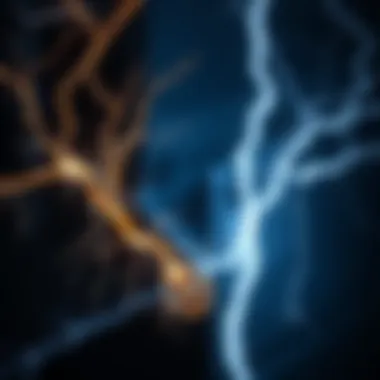
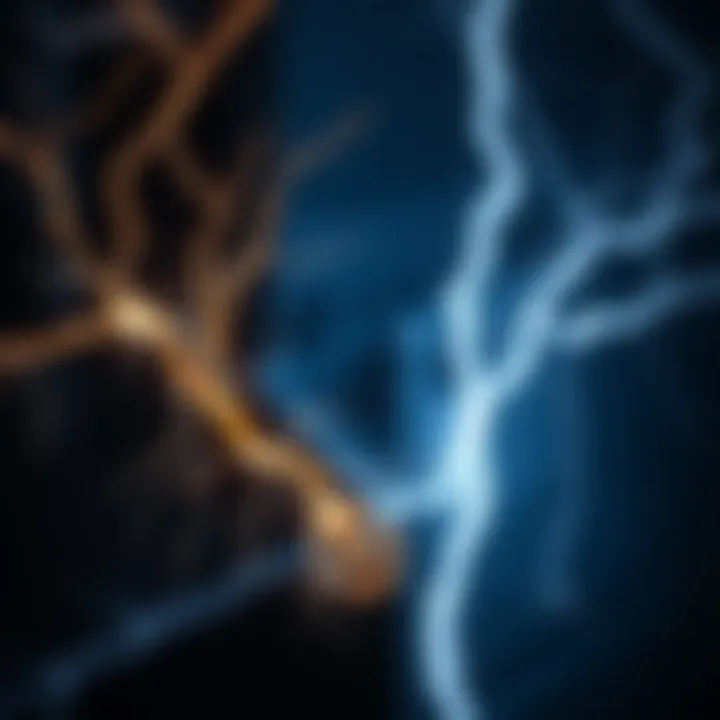
Intro
Static electricity, often misunderstood as mere phenomena striking during dry weather, plays a pivotal role across many scientific disciplines. It arises from the imbalance of electrical charges within or on the surface of a material. Often characterized by its instantaneous effects, such as static cling or surprising shocks, this phenomenon can provide important insights into the behavior of materials and the environment around us. Understanding static electricity is crucial in fields ranging from physics and chemistry to engineering and electronics.
The aim of this article is to dissect the principles surrounding static electricity while offering an in-depth look at the methods employed for its measurement. By exploring innovative tools and techniques and discussing applications in real-world scenarios, this work strives to equip students, researchers, educators, and professionals with the knowledge necessary to both understand and work effectively with static electricity.
The relevance of static electricity extends beyond mere academic curiosity. In industrial settings, for instance, managing static charges can prevent accidents and improve the quality of products. Likewise, in the realm of electronics, precise measurements of static charge can lead to enhanced device performance and longevity. All these factors combine to shape a comprehensive narrative that underscores the significance of getting a firm grip on static electricity's core principles and the methodologies used to measure it.
Intro to Static Electricity
Static electricity is more than just a playful shock received after walking across a wool carpet. It’s a fundamental concept that plays a pivotal role in various scientific and industrial domains. Understanding static electricity helps to grasp the implications it has across many sectors, from manufacturing to environmental science. By measuring static electricity effectively, professionals can mitigate risks and improve efficiency in processes involving electrical charge.
Definition and Significance
At its core, static electricity refers to the accumulation of electric charge on the surface of objects. This charge remains in a stationary state until it finds a pathway to discharge, often leading to noticeable phenomena, such as sparks or shocks. The significance of static electricity cannot be understated; it influences everyday activities, from the mundane act of removing a sweater to complex industrial processes like those found in semiconductor manufacturing.
Static electricity is crucial in understanding how electric fields impact materials. For example, in electronics, static discharge can destroy sensitive components, emphasizing the necessity for effective measurement techniques to prevent costly damages. By measuring static electricity levels, industries can enact preventative measures to protect their equipment and personnel. Hence, the study of this phenomenon holds substantial relevance in today's technologically driven society.
Historical Perspectives
The exploration of static electricity is rich with intriguing historical details that reflect humanity’s understanding of electricity through the ages.
- Thales of Miletus, a Greek philosopher from around 600 BC, was among the first to document observations of static electricity, having noticed that rubbing amber with fur could attract lightweight particles. This early discovery laid the groundwork for understanding electrical phenomena.
- Fast forward to the late 1600s, William Gilbert described the properties of magnets and electric attraction, furthering scientific inquiry. His work highlighted the distinction between magnetic and electric forces.
- In the 18th century, figures like Benjamin Franklin conducted significant experiments with Leyden jars, providing insights into electrical charge and fostering an awareness of static electricity's potential dangers and applications.
This historical perspective illustrates not only the evolution of scientific inquiry but also populates the collective understanding of static electricity with foundational theories that apply to today’s measurements and applications. By continuing to study static electricity, we honor the legacy of past thinkers while forging paths for modern advancements.
Theoretical Foundations of Static Electricity
Understanding static electricity requires delving into its theoretical underpinnings. This section sheds light on the fundamental concepts that form the bedrock of static electricity, alongside the laws that dictate its behavior. Building a strong foundation enables a more informed approach to measuring and applying static electricity in various contexts.
Fundamental Concepts
Charge
Charge is one of the core components of static electricity. At its most basic, it refers to the property of matter that causes it to experience a force when placed in an electromagnetic field. The most noteworthy aspect of charge is that it exists in two forms: positive and negative. This duality leads to the fundamental interactions of attraction and repulsion, making charge a popular topic of discussion within this article.
An important unique feature of charge is that it is quantized, meaning it comes in discrete amounts. In practical terms, this means that even minute quantities can have significant effects on other charged objects. For instance, consider how a simple balloon can become statically charged through rubbing it against hair, causing it to lift particles of dust or even stick to walls. The advantages of understanding charge in static electricity encompass better measurement techniques and applications across various fields, from materials science to electronics. However, its drawbacks include difficulties in quantifying charge in practical situations where multiple surfaces interact.
Conductors vs. Insulators
The distinction between conductors and insulators is pivotal in understanding how static electricity functions. Conductors allow electric charges to flow freely, while insulators impede this flow. This characteristic plays a crucial role in the management of static electricity and in the development of devices meant to measure it effectively.
Conductors such as metals are significant because they enable the movement of charge, crucial for practical applications like electrostatic discharge (ESD) processes. On the other hand, insulators such as rubber or glass are essential for preventing unintended flow of charge. The unique feature of conductors lies in their low resistance to electric current, whereas insulators maintain high resistance. The advantages of using conductors include their ability to easily channel charge, but they can also lead to danger if static discharge is not managed properly. Conversely, insulators can prevent damage from static electricity but pose challenges in measurement accuracy.
Laws Governing Static Electricity
Coulomb's Law
Coulomb's Law describes the force between two charged objects, which depends on the amount of charge each possesses and the distance between them. It establishes a mathematical foundation for understanding how quantities of charge interact, making it a cornerstone of electrostatics and, by extension, a fundamental aspect of this article. The law states that the force between two points of charge is directly proportional to the product of the charge amounts and inversely proportional to the square of the distance between them.
This law is particularly beneficial in calculating the forces acting on charged objects within a measured system. A notable advantage of Coulomb's Law is its straightforward application in various scientific and engineering contexts. However, the simplicity may lead to oversight of factors such as external fields or the medium through which charges interact, potentially skewing results in specific scenarios.
Electrostatic Induction

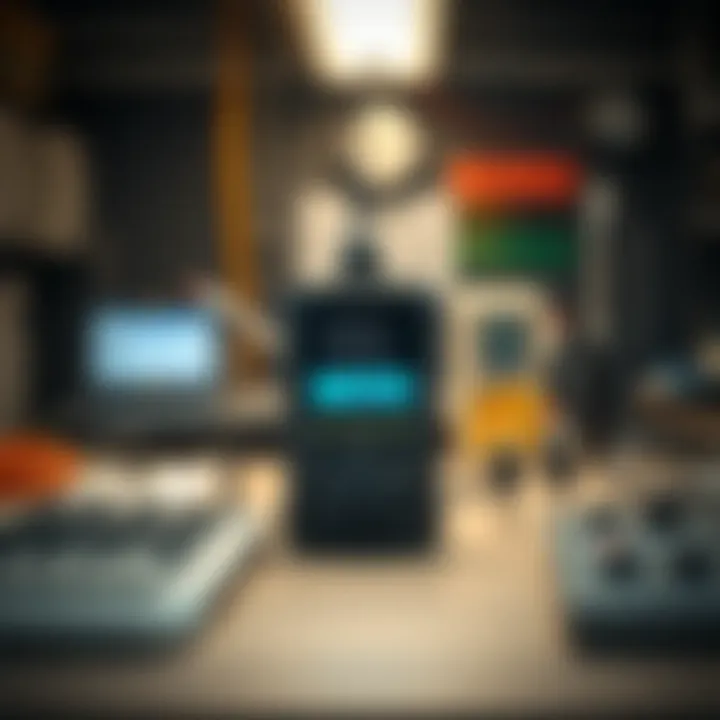
Electrostatic induction occurs when one charged object influences the distribution of charge within another object without direct contact. This principle illustrates how static electric fields can generate charge separation, making it possible to manipulate materials for various applications. The key characteristic of electrostatic induction is that it allows for the control of charges without direct transfer.
This process is particularly useful in the development of electrostatic measuring tools and has significant implications in industries that heavily rely on charged particles. The unique advantage of electrostatic induction is the ability to influence materials remotely, thereby facilitating the design of advanced devices. However, it may come with challenges in accurately predicting charge distribution in complex environments, leading to potential miscalculations in measurements.
Measurement Techniques for Static Electricity
Understanding how to measure static electricity is crucial for various fields, including physics, engineering, and manufacturing. Static electricity is a pervasive phenomenon that can lead to both innovative applications and significant challenges in industrial settings. The measurement techniques used play a fundamental role in ensuring that static charge is appropriately managed.
In various environments, static charge can accumulate unexpectedly, leading to equipment malfunction or safety hazards. Thus, relying on appropriate measurement techniques not only helps in quantifying static charge but also in implementing necessary precautions and controls. This section delves deeper into some of the prominent techniques used in measuring static electricity, from traditional instruments to modern technological innovations.
Electrometer
The electrometer stands out as one of the most vital instruments for measuring electric charge. It operates utilizing an ultra-sensitive mechanism that can detect even minuscule quantities of static charge. These devices often feature very high input impedance, allowing them to measure high voltages without drawing much current. This is particularly important, as it minimizes the influence of the operating device on the measurements, ensuring accurate readings.
Electrometers come in various types, such as digital and analog, each offering unique benefits. Digital electrometers, for example, provide precise readings and the ability to record data over time. This device finds utility in laboratories, research, and educational institutions, making it invaluable for studies related to electrostatics.
Moreover, although the cost of high-quality electrometers can be steep, their accuracy often justifies the investment for serious applications. Many researchers often stress the importance of calibration and shielding in the measurement process to eliminate extraneous noise that could affect results.
Faraday Cup
The Faraday cup serves as a practical tool for measuring electrostatic charge, particularly in experimental setups involving charged particles. Functioning as a conductive container, it collects charges and quantifies their amounts through current measurement. When a charged particle strikes the cup, it generates a current proportional to the quantity of charge that impacted it.
This approach is particularly useful in scenarios involving particle beams, such as in ion implantation processes and mass spectrometry. Faraday cups can deliver accurate readings over a broad range of conditions, especially in high-vacuum systems. The key to effective measurements lies in maintaining the electrostatic equilibrium of the cup, which can sometimes be delicate.
The application of Faraday cups in research is particularly crucial when precise charge measurements are imperative. They not only help in enhancing understanding in particle physics but also in semiconductor fabrication processes.
Triboelectric Charge Measurement
Among the various techniques, triboelectric charge measurement has gained traction primarily in assessing static electricity created by friction. The triboelectric effect occurs when certain materials become electrically charged after coming into contact with one another. Measuring this charge requires an understanding of the respective materials’ placement in the triboelectric series. This series categorizes materials based on their propensity to gain or lose electrons.
Methods such as using tilting charge plates or electroscopes can be employed for practical triboelectric charge measurement. However, it requires careful analysis and consideration of environmental variables that may impact the results. For instance, humidity can significantly affect static charge accumulation, so it's imperative to conduct measurements in controlled conditions.
Capacitance Methods
Capacitance methods for measuring static electricity provide an indirect but effective means of assessment. This technique utilizes the principle that a charged body can influence the capacitance of an adjacent conducting element. By analyzing the change in capacitance, one can infer information about the static charge present in the system.
Capacitance measurement setups can be relatively simple and involve the use of capacitive sensors. These sensors are adept at measuring fluctuations in charge without direct contact, which is advantageous in sensitive environments. Furthermore, this non-invasive technique allows for continuous monitoring and is favored in processes where on-the-fly assessments are necessary.
Instruments Used in Measuring Static Electricity
When it comes to the realm of static electricity, understanding the instruments available for measurement can't be overstated. These devices do more than just quantify charge; they play pivotal roles in ensuring safety, enhancing product quality, and driving research forward. As static electricity can lead to undesired discharges that could potentially cause harm or malfunction in delicate equipment, having reliable instruments to gauge its presence is essential for various industries.
Apart from providing numerical data, these instruments help visualize the invisible phenomenon of static electricity. It’s all about bringing clarity to a domain that often works behind the scenes. Key considerations when selecting instruments include precision, response time, and the specific application they are intended for.
"Static electricity may be invisible, but the right instruments can shed light on its behavior and implications"
Furthermore, the accurate measurement of static charge underpins research in electrostatics, environmental science, and manufacturing processes. With the tech landscape continuously advancing, modern devices present opportunities for more accurate, faster measurements. Subsequently, proper choice of instrumentation is a benefit, not a burden for any professional working across scientific fields.
Types of Electrometers
Electrometers are specialized devices designed for measuring electrical charge and voltage. It is crucial to recognize that different types of electrometers cater to various applications and environments. Here are some of the notable types:
- Analog Electrometers: Old but gold; they utilize galvanometers and are suitable for high sensitivity tasks. While they may not grace the latest technology charts, they still have their place in applications requiring simplicity and ease of use.
- Digital Electrometers: Nowadays, digital options are in high demand. They offer enhanced functionality that allows for easier data logging, analysis, and processing. With crisp displays and often programmable features, they enable users to tailor measurements according to their specific needs.
- Field Mill Electrometers: A specialized instrument for measuring electric fields. These devices allow researchers to visualize environmental static fields, helping in meteorological studies or pollution assessments.
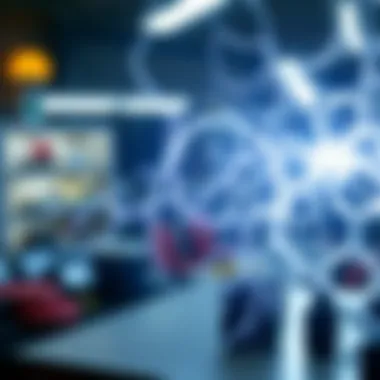

The choice of electrometer will depend on the need for sensitvity and precision versus ease of use.
Applications of Faraday Cups
Faraday cups play an integral role in the measurement of charged particles. Specifically designed to capture and measure charge, these devices are often employed in laboratories and industrial settings. Here’s how they stand out:
- Particle Detection: Faraday cups can detect individual charged particles, making them invaluable in experiments and tests involving ion beams or electron streams. This functionality aids in facilitating research within particle physics and materials science.
- Surface Charge Measurements: Industries often use Faraday cups when assessing surface charge characteristics in manufacturing processes. Understanding surface properties ensures product quality and safety, particularly in semiconductor fabrication and electronics.
- Calibration: They serve as calibration standards in various scientific settings. Ensuring that other measuring instruments maintain accuracy often involves frequent checks against a Faraday cup, thus helping establish reliability.
By allowing for both quantitative analysis and qualitative insights, Faraday cups continue to be an essential tool.
Advanced Measurement Devices
The landscape of measurement instruments is constantly evolving with technological strides. Advanced measuring devices take functional flexibility and precision to new heights. Noteworthy advancements include:
- Optoelectronic Sensors: Leveraging light technology, these sensors measure electrostatic charges with non-contact methods. They offer an advantage in scenarios where contact measurement could generate erroneous results due to additional charge introduction.
- Laser Doppler Vibrometry: This method measures surface charges through the vibrations induced by electrostatic forces. It is a non-invasive approach that has risen in popularity, particularly in research settings where maintaining sample integrity is crucial.
- Ion Mobility Spectrometers: Integrated with advanced computing capabilities, these devices can analyze ions' mobility in different environments. This technology extends far beyond simple charge measurement, mapping physical and chemical properties in materials at a molecular level.
Practical Applications of Static Electricity Measurements
Understanding and measuring static electricity is not just an academic exercise. The practical applications are widespread, touching many sectors. By deciphering these measurements, industries can optimize processes, uphold safety standards, and enhance product quality. With technology continuously advancing, the measurements of static electricity remain indispensable.
Industrial Applications
Electrostatic Precipitators
Electrostatic precipitators serve as a prime example of how static electricity measurements can lead to substantial environmental benefits. These devices can effectively reduce pollutants from industrial exhausts. They operate by using static charges to remove particles from emissions, making them more efficient than traditional filtration methods. What’s remarkable about electrostatic precipitators is their ability to operate consistently under various conditions—whether they encounter high particulate loads or moisture in the air.
One key feature of these precipitators is their energy efficiency. They require less energy compared to conventional systems because they do not rely on large fans or motors. Instead, they utilize electric charges, thereby reducing operational costs and promoting sustainability. However, the downside may be their initial setup cost, which can be significant for smaller facilities.
Static Charge in Manufacturing
Static charge in manufacturing can either be a boon or a bane. On one hand, it can enhance processes, such as improving the adhesion of coatings on surfaces. This means a stronger bond and a longer-lasting finish on products. In industries where quality and durability matter, managing static charge can lead to noticeable improvements in final products.
However, uncontrolled static charge can wreak havoc. For instance, in electronics manufacturing, even a small static discharge can destroy sensitive components. To tackle this, industries employ various measurement methods to monitor and mitigate the risks of static build-up. Ensuring that the environment is free from damaging static charges allows for smoother processes and safer operations.
Safety and Quality Control
In the realm of safety and quality control, measuring static electricity can not be overstated. Static discharge not only poses risks of igniting flammable materials, but it can also lead to product defects. For instance, the automotive and electronics industries implement strict protocols involving static measurements to maintain safety standards. This includes grounding techniques and the use of conductive materials to keep static at bay.
Maintaining high standards through effective static charge management saves companies from potential financial losses due to recalls or redesigns. Moreover, investing in proper measurements and corresponding controls directly translates to improved consumer trust.
By embracing the significance of static electricity measurements, industries can better navigate the complexities of their operational challenges. These applications offer compelling evidence that static electricity—often regarded merely as a nuisance—can be harnessed effectively to drive innovation and safety.
Challenges in Measuring Static Electricity
Measuring static electricity presents a myriad of challenges that can hinder accurate assessments and applications in various fields. Understanding these challenges is paramount for researchers, educators, and professionals who navigate the intricacies of static charge measurement. The subject matter is not simply an academic exercise; it has real-world implications in industries such as manufacturing, telecommunications, and healthcare. Delving into these challenges not only sharpens our measurement techniques but also informs our overall approach to managing static electricity in practical settings.
Environmental Factors
Environmental conditions play a significant role in the measurement of static electricity. Influences such as humidity, temperature, and proximity to conductive materials can cause variations that affect readings. For instance, high humidity levels tend to increase the conductivity of surfaces, thus dampening static charge accumulation. If you try to measure static electricity in a humid environment, you might end up with results that are much lower than expected.
Additionally, temperature changes can also impact the dielectric properties of materials, further complicating the measurement process. Conductive dust or moisture particles present in the air can inadvertently transfer charge, leading to erroneous readings. These factors necessitate strict control and calibration of the environment where measurements take place, making it essential to establish standard conditions before conducting experiments.
"Environmental disturbances can transform a straightforward measurement into a puzzling conundrum."
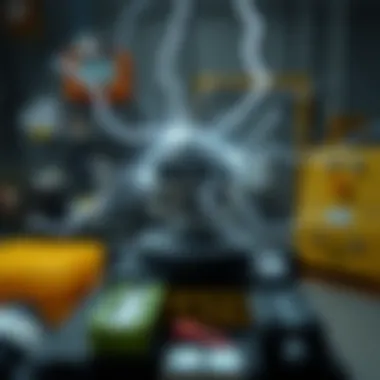

Furthermore, variations in the surfaces being tested can yield different static charge accumulation characteristics. For instance, materials like rubber and plastic may behave uniquely under identical environmental conditions, necessitating their consideration in measurement protocols. This highlights the need for a systematic approach when designing measurement setups and interpreting results.
Equipment Limitations
While technology has made leaps forward, devices used for measuring static electricity come with their own sets of limitations. Many common measuring instruments have inherent sensitivities and calibration requirements that can significantly impact their effectiveness. For example, traditional electrometers might not account well for transient charges or rapidly changing fields, potentially leading to misinterpretation of results.
Moreover, the design of such instruments often mandates a delicate touch. Depending on the method of measurement, stray electric fields can cause interference, leading to deviations in readings. Some instruments are designed to measure only specific ranges of voltage or charge, thereby providing a narrow view of what could be occurring in a broader context. That can be a real issue if you’re trying to capture the nuances of the variable static charges you often find in dynamic environments.
As a result, researchers must often use specialized equipment and methodologies tailored for specific applications. This specialized approach can increase costs and complicate what could otherwise be straightforward measurements. It also raises the need for a solid understanding of the equipment’s capabilities and limitations, ensuring that users can interpret data correctly.
In sum, both environmental factors and equipment limitations pose significant challenges in accurately measuring static electricity. Addressing these issues is crucial for advancing our understanding and application of static electricity across different domains.
Recent Advances in Measurement Techniques
In the fast-evolving domain of electrostatics, the significance of keeping pace with the most recent advancements in measurement techniques cannot be understated. Developing innovative methods and instruments to measure static electricity is crucial for enhancing accuracy and reliability, especially considering the various applications it has across numerous fields like automotive, electronics, and even medicine. The efficacy of static electricity measurements can profoundly influence product performance, safety standards, and quality control in manufacturing processes. Thus, understanding these advances helps professionals to stay ahead in their respective disciplines.
Innovative Instrumentation
The landscape of static electricity measurement has seen remarkable growth, particularly with the introduction of sophisticated instrumentation designed to facilitate precise measurements. One notable device is the digital electrostatic voltmeter. Unlike traditional models, this device employs advanced digital signal processing, leading to heightened sensitivity and a broader measurement range. These voltmeters can resolve smaller voltage differences, making them ideal for delicate experiments in laboratory settings or high-tech manufacturing environments.
Moreover, advancements in capacitance measurement techniques have yielded compact devices that can provide real-time monitoring of static charge levels with exceptional precision. These new capacitance meters often come with wireless capabilities, allowing data to be transmitted to handheld devices or personal computers for further analysis and long-term tracking.
"The precision of measurements can make or break the success of products reliant on static electricity."
Additionally, the integration of photonic sensors into measurement instrumentation marks a noteworthy trend. This cutting-edge technology employs light properties to detect and quantify electrostatic charges. By using principles of optoelectronics, photonic sensors provide a non-invasive solution, thus minimizing disruption in sensitive environments.
Emerging Technologies in Measurement
As the field continues to advance, several emerging technologies are set to transform static electricity measurement. Nanotechnology is at the forefront, offering highly sensitive detection mechanisms that operate at the nanoscale. For example, nanoscale capacitors equipped with functionalized surfaces can enhance the detection of static charges, allowing for more effective monitoring in environments where traditional methods might struggle.
Furthermore, the advent of machine learning algorithms is making waves in data processing for electrostatic measurements. These algorithms can analyze data patterns and predict static charge behaviors, establishing a more proactive approach to managing static electricity in industrial applications. By leveraging data from past measurements, machine learning can significantly improve the accuracy and efficiency of future testing protocols.
Lastly, developments in remote sensing technologies are opening doors to more versatile measurement solutions. Instruments that can gauge static electricity levels from a distance without direct contact are becoming increasingly available. This innovation not only allows for safer operations but also enables the monitoring of hard-to-reach areas, which has significant implications in sectors such as aerospace and architecture.
In summary, the recent advancements in measurement techniques for static electricity highlight a blend of improved instrumentation and emerging technologies. They not only enhance the accuracy and reliability of measurements but also facilitate innovative applications across diverse fields. For those keen to push boundaries and refine methodologies, staying informed about these advances is essential.
For further reading, consider exploring resources such as Wikipedia on static electricity, Britannica, and relevant scholarly articles found in educational databases or government publications.
Culmination
In this article, the comprehensive exploration of static electricity measurement has revealed its crucial significance across various scientific disciplines. Capacitating students, researchers, educators, and professionals alike, it enhances our understanding of fundamental physical principles while enabling practical applications in industry and research.
One of the critical aspects we've delved into is the nuances of measurement techniques. Whether it's utilizing devices like the electrometer or employing innovative instrumentation such as Faraday Cups, the methodologies selected can greatly affect both precision and applicability. Because of that, comprehending these methods empowers scientists to select appropriate instruments tailored to their needs.
Furthermore, recognizing the environmental factors and equipment limitations highlighted the complexities in acquiring reliable data. Addressing these challenges leads to better designs and innovative solutions that can withstand the practical realities faced in laboratory settings or fieldwork.
Thus, our discussions encapsulated not just technical insights but also the importance of adaptability and continuous development in measurement practices. As we move toward a future where technology integrates deeper into our fabric, the relevance of accurate static electricity measurements cannot be overstated. This brings us to the need for ongoing research which will not only refine existing techniques but also explore uncharted territories.
"In the evolving landscape of science and technology, staying ahead in measurement techniques lays the groundwork for future breakthroughs."
Summary of Key Points
- Significance of static electricity: Essential across multiple fields, from electronics to materials science.
- Diverse measurement methods: Techniques discussed include electrometers, Faraday Cups, and capacitance methods.
- Challenges faced: Environmental factors play a role, and equipment limitations can arise, stressing the need for precision tools.
- Applications: Highlighted the use of static electricity in industrial settings, impacting manufacturing and quality control.
Future Directions in Research
Numerous avenues for future research in the measurement of static electricity exist. Some potential directions include:
- Development of novel instrumentation: Advancements in technology could provide more precise tools that mitigate existing measurement errors.
- Investigation of new materials: Research on emerging materials can shed light on how static charge behaves differently, offering insights for industries like electronics.
- Interdisciplinary approaches: Combining expertise from various scientific domains could lead to innovative solutions and measurement techniques that enhance our understanding of static electricity.
- Enhanced modeling: Theoretical models must continue evolving to incorporate findings from practical applications, resulting in powerful predictive tools for researchers.
As scholars proceed to unravel the complexities of static electricity and its measurement, a collaborative effort across disciplines will undoubtedly pave the way for advancements that are not only desired but indispensable in our increasingly technocentric world.



